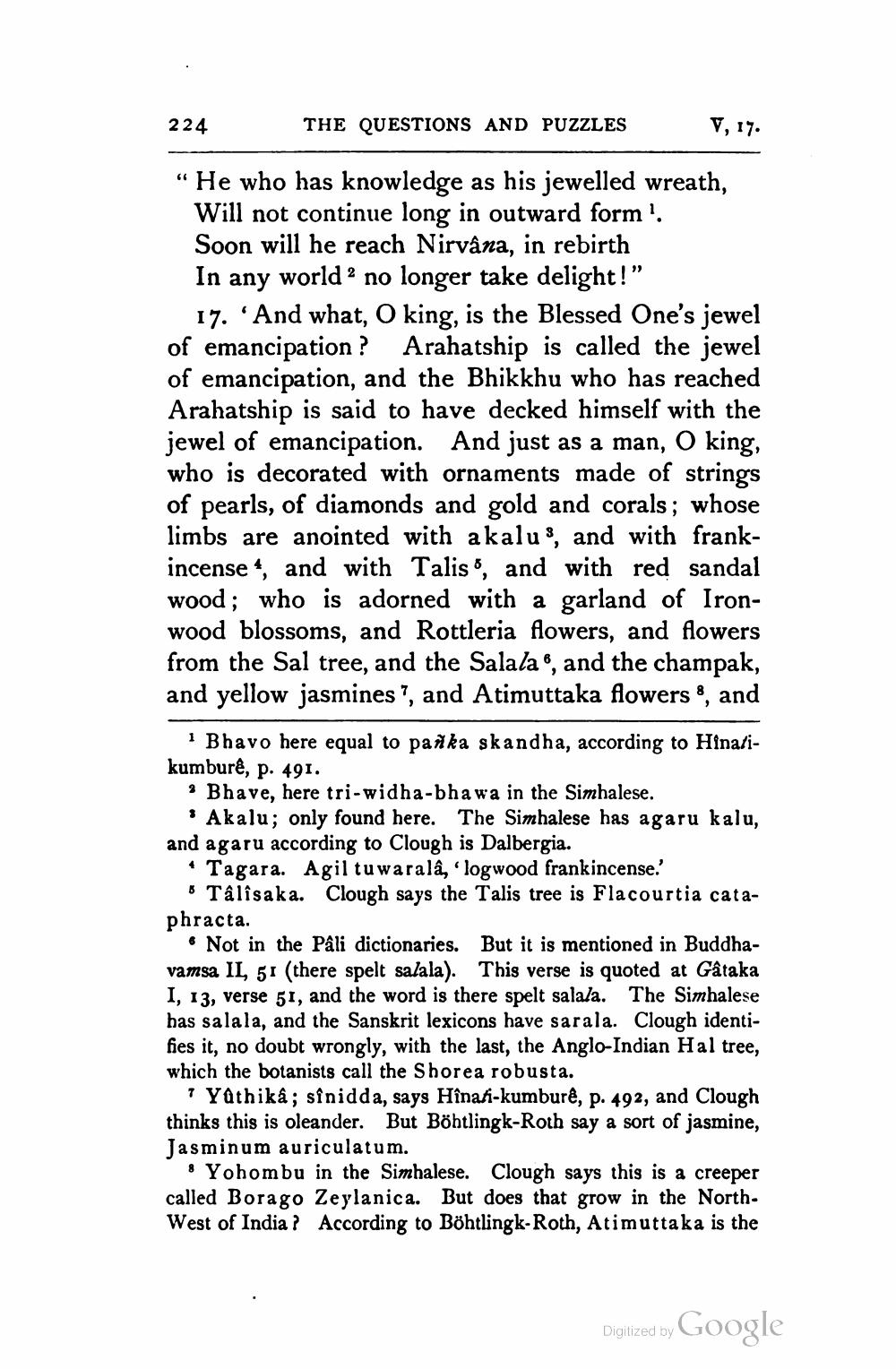________________
224
THE QUESTIONS AND PUZZLES
"He who has knowledge as his jewelled wreath, Will not continue long in outward form '. Soon will he reach Nirvâna, in rebirth In any world no longer take delight!"
V, 17.
17. 'And what, O king, is the Blessed One's jewel of emancipation? Arahatship is called the jewel of emancipation, and the Bhikkhu who has reached Arahatship is said to have decked himself with the jewel of emancipation. And just as a man, O king, who is decorated with ornaments made of strings of pearls, of diamonds and gold and corals; whose limbs are anointed with akalu, and with frankincense, and with Talis, and with red sandal wood; who is adorned with a garland of Ironwood blossoms, and Rottleria flowers, and flowers from the Sal tree, and the Salala, and the champak, and yellow jasmines, and Atimuttaka flowers, and
1 Bhavo here equal to paйka skandha, according to Hina/ikumburê, p. 491.
2 Bhave, here tri-widha-bhawa in the Simhalese.
'Akalu; only found here. The Simhalese has agaru kalu, and agaru according to Clough is Dalbergia.
Tagara. Agil tuwaralâ, 'logwood frankincense.'
Tâlîsaka. Clough says the Talis tree is Flacourtia cataphracta.
Not in the Pâli dictionaries. But it is mentioned in Buddhavamsa IL, 51 (there spelt salala). This verse is quoted at Gâtaka I, 13, verse 51, and the word is there spelt salala. The Simhalese has salala, and the Sanskrit lexicons have sarala. Clough identifies it, no doubt wrongly, with the last, the Anglo-Indian Hal tree, which the botanists call the Shorea robusta.
7 Yûthikâ; sînidda, says Hînafi-kumburê, p. 492, and Clough thinks this is oleander. But Böhtlingk-Roth say a sort of jasmine, Jasminum auriculatum.
Yohombu in the Simhalese. Clough says this is a creeper called Borago Zeylanica. But does that grow in the NorthWest of India? According to Böhtlingk-Roth, Atimuttaka is the
Digitized by
Google




